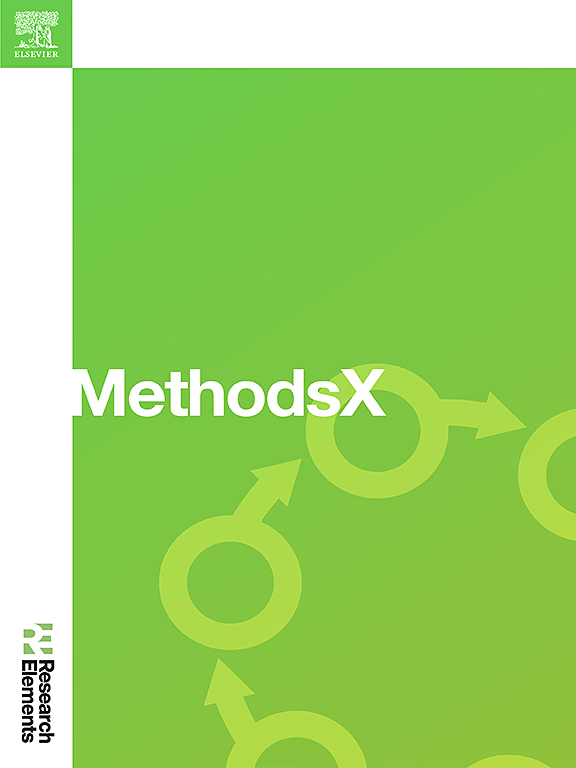利用气象观测资料预测未来气候,生成长期全新世气候资料的简单方法
IF 1.6
Q2 MULTIDISCIPLINARY SCIENCES
引用次数: 0
摘要
泥炭地在全球碳储存中发挥着至关重要的作用,但它们对气候变化的适应能力仍不确定。本研究提出了一种新的方法来生成长期(>;1000年)特定地点的气候数据,以驱动泥炭地生态水文模型。利用气象观测资料,我们利用朗阿什顿研究站天气发生器(LARS-WG)生成降水和温度的随机气候序列。该方法整合了EPOCH-2数据库的全新世气候重建,模拟古气候趋势,并基于CMIP6模型的共享社会经济路径(SSP)插值气候预测。最后,利用修正版的Thornthwaite方程计算潜在蒸散量的时间序列。这种方法确保了泥炭地建模的气候输入的连续性,有助于评估长期气候对碳动态的影响。我们的方法为其他地区提供了一个可复制的框架,支持改进气候驱动的泥炭地模拟。•为特定地点量身定制的气候预测的长期古气候数据很少可用•本研究概述了一种简单的方法,用于生成驱动生态系统模型的气候序列•使用适用于整个欧洲的开源资源和数据库本文章由计算机程序翻译,如有差异,请以英文原文为准。

A simple method for generating long-term Holocene climate data with future climate projections from meteorological observation data
Peatlands play a crucial role in global carbon storage, yet their resilience to climate change remains uncertain. This study presents a novel method for generating long-term (>1000 years) site-specific climate data to drive peatland ecohydrological models. Using meteorological observations, we employ the Long Ashton Research Station Weather Generator (LARS-WG) to produce stochastic climate series for precipitation and temperature. The method integrates Holocene climate reconstructions from the EPOCH-2 database to simulate paleoclimate trends and interpolates climate projections based on Shared Socioeconomic Pathways (SSP) from CMIP6 models. Finally, a time series of potential evapotranspiration is calculated using a modified version of the Thornthwaite equation. This approach ensures continuity in climate inputs for peatland modelling, aiding in the assessment of long-term climate impacts on carbon dynamics. Our method provides a replicable framework for other regions, supporting improved climate-driven peatland simulations.
- •Long-term paleoclimate data with climate projections tailored to specific sites are scarcely available
- •This research outlines a simple method for generating climate series for driving ecosystem models
- •Uses open-source resources and databases that are applicable across Europe
求助全文
通过发布文献求助,成功后即可免费获取论文全文。
去求助
来源期刊

MethodsX
Health Professions-Medical Laboratory Technology
CiteScore
3.60
自引率
5.30%
发文量
314
审稿时长
7 weeks
期刊介绍:
 求助内容:
求助内容: 应助结果提醒方式:
应助结果提醒方式:


